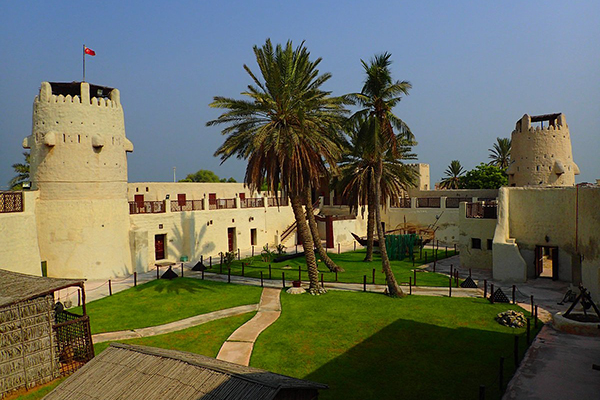If you're in the area and looking for a fun and informative day out, make sure to check out the Umm Al Quwain Museum. Located in the historic Umm Al Quwain Fort, it used to be the home to the ruling family. The Museum features old photographs and other diorama exhibits.
Located in the Umm Al Quwain Fort
Located in the United Arab Emirates, the Umm Al Quwain Fort is a historic site. It was home to the rulers of Umm Al Quwain and served as the centre of government until 1969. This fort is now a national heritage site that attracts tourists from all over the world.
The Umm Al Quwain Fort is also known as the Al Ali Fort. It was built in 1768 by Sheikh Rashid Bin Majid Al Mualla, the founder of the Al Mualla ruling family. The fort is located in the city's old souq area. The fort has a tragic history. In 1929, Sheikh Hamad Bin Ibrahim Al Mualla was assassinated in the fort by one of his blind uncle's slaves. Townspeople then burned down the fort. Nowadays, the fort is home to a museum displaying traditional Emirati culture. The museum also holds a collection of archaeological artifacts.
The museum houses artefacts discovered in the nearby Ed-Dur archaeological site. This site is the largest archaeological site in the UAE and is ranked among the lost cities of Arabia. The museum also features a section devoted to the royal family's jewels. Old cannons are also on display.
Home to the ruling family
The Umm Al Quwain Museum is located in the former Umm Al Quwain Fort, which housed the ruling family until the 1960s. The building itself is home to many historical and modern artifacts, as well as a section on the ruling family's heritage. There is also a documentary film room and a room dedicated to sea equipment and traditional markets.
The Umm Al Quwain Emirate was established in 1775 by Sheikh Majid Al Mualla as an independent sheikhdom. It is currently ruled by Saud bin Rashid Al Mualla, the crown prince. His deputy is Abdullah bin Rashid Al Mualla III. The emirate's economy is heavily based on tourism, fishing, and general trading. Its population is around 72,000 and covers about 770 square kilometers.
Police station
The Umm Al Quwain Museum and Police Station is situated in the former Umm Al Quwain Fort, which was built in 1786 by the rulers of the emirate. The fort served as the seat of the local government and a residence for the ruling family until the 1960s. Today, it is a museum showcasing artifacts and weapons from different eras. The museum is located at the entrance to the Old City, close to the Masjid Mosque and the Bazaar.
The museum is a treasure trove of information on UAE history. Whether you're interested in the UAE's early history or its present, the museum has something for everyone. There are fascinating exhibits focusing on local archaeological sites. These include headless falcon statues, a turtle-shaped stone plate, and human-shaped bone plaques. Guests can also discover Emirati art and culture through ethnographic exhibits. The museum also showcases traditional Emirati weapons.
Diorama exhibits
The Umm Al Quwain Museum is an excellent place to explore the history and culture of the region. Its exhibits feature items from the sea and show how the local people have worked with the sea for centuries. You can even see models of pearl fishing ships and other vessels. The museum also displays items related to the local traditions, such as traditional tailoring. The museum also includes the first trading license and stamp from the region, and handwritten copies of the Holy Qur'an from the 17th century.
You can easily spend an hour or two exploring the Umm Al Quwain Museum. It is an excellent place for kids and families to learn about UAE history.
Schedule for completion
The emirate of UAE is currently constructing a new museum in Umm Al Quwain, which will feature Arab culture. It will span 8,000 square meters and is scheduled for completion by June 2022. Once completed, the museum will feature prominent artifacts and historical finds from the region's past.
The museum contains a variety of artifacts from the region's history, including artifacts from pre-historic wars. There is also an Old Harbor, the oldest in the world, with many artisans working in the area. The Islands of Umm Al Quwain are also a major tourist attraction, and include Dream Land Aqua Park. And, if you're a history buff, you can visit the largest pre-Islamic archaeological site on the Persian Gulf, Al Dour.
The museum is located in an old fort. This fort was once a residence of the local ruler for nearly two centuries. Then it was converted to a police station, and eventually a museum. It opened to the public in 2000.
